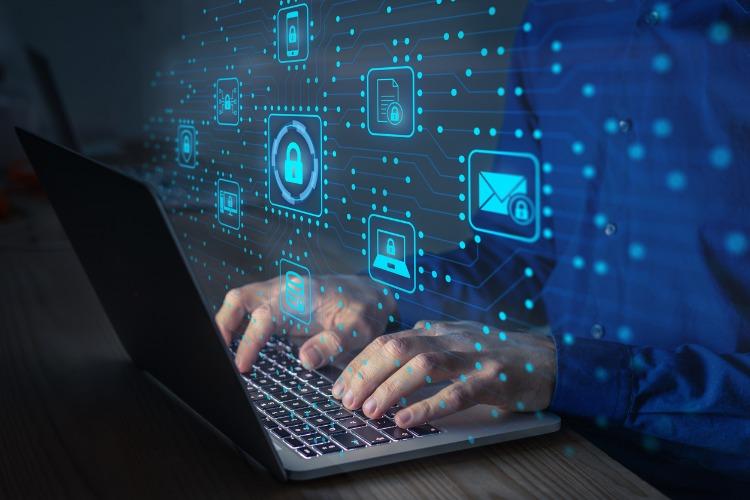How Enterprise Identity Protection Can Prevent Cyber Attacks?
Protecting enterprise identities has never been more critical in today's interconnected business landscape. Cybersecurity Ventures predicts cybercrime will cost the world $10.5 trillion annually by 2025. Attacks on company identities are a major cause of cybercrime.
Hackers are always trying to steal employee logins to get into company secrets. They use tricks like phishing emails and fancy hacking to do this. Protecting identities is super important for businesses, and it is not just an IT concern. Stopping these attacks is key to keeping a company's reputation safe, protecting its money, and making sure everything runs smoothly.
Let's dive in and learn more about this!
Understanding the Threats
Cybercriminals use many tactics to steal company identities. A common method is phishing scams, where they trick employees into giving up login information through fake emails or websites. Another way is credential stuffing, where they use stolen usernames and passwords to get into other accounts. They also use brute force attacks, which are tools that try guessing passwords over and over until they get it right.
Inside threats are also dangerous, whether they're on purpose or not. Unhappy employees can purposely give attackers access to company systems. Employees whose devices have been hacked might accidentally do the same. These attacks can have serious consequences, like data leaks, money loss from fraud, bad publicity, and problems with important work processes.
The Pillars of Enterprise Identity Safety
A robust identity protection strategy rests on several interconnected pillars. Let's know what these are:
Strong Authentication
In enterprise identity protection, strong authentication methods, such as multi-factor authentication (MFA), serve as a crucial first line of defense. Various platforms offer MFA solutions, making it easier for organizations to implement this essential security measure. MFA requires users to provide multiple verification factors to access an account. This significantly reduces the risk of unauthorized logins, even if a password is compromised.
Access Management
Access management is a key part of keeping company data safe. It makes sure people can only see the information they need for their job. This is called "least privilege." If someone's account gets hacked, limiting access minimizes the damage. Companies use tools like role-based access control and attribute-based access control to manage who can see what. These tools make sure that what people can access matches their job responsibilities.
Identity Governance and Administration (IGA)
Identity governance and administration (IGA) solutions manage user identities from start to finish. They automate tasks like giving and removing access, making identity management easier. This helps organizations track who can access what, ensuring everything is accurate and current.
Real-time Monitoring and Anomaly Detection
Real-time monitoring and anomaly detection are essential for promptly identifying suspicious activity. Machine learning algorithms analyze user behavior patterns. They detect anomalies that may indicate unauthorized access or malicious intent. This enables organizations to respond quickly and mitigate potential threats.
Implementing Effective Identity Protection
Implementing effective identity protection requires a well-thought-out approach.
- Choose the Right Solutions: Organizations should carefully consider their specific needs and risk profile when choosing identity protection solutions. Key factors include scalability, integration with existing systems, and ease of use.
- Security Awareness Training: Security awareness training is crucial in preventing identity-based attacks. Employees should be educated about the various tactics cybercriminals use. These tactics may include phishing scams and social engineering. Regular training sessions can help employees develop a security-conscious mindset. This will help them adopt safe online practices.
- Regular Reviews and Updates: Regular reviews and updates of identity protection measures are essential to staying ahead of evolving threats. As cybercriminals refine their techniques, organizations must remain vigilant. They must adapt their security strategies to stay ahead of the evolving threat landscape. Periodic audits of access controls are crucial. Reviewing user activity logs and updating security policies help maintain strong identity protection.
Real-World Examples
Real-world examples show how strong identity protection works. In 2019, Google stopped a major phishing attack on hundreds of important people. They used security keys and special tools to detect phishing. This stopped hackers from getting in and kept user data safe.
Yahoo also had a data breach in 2013. They then made everyone use MFA (multi-factor authentication). This stopped a lot of unauthorized logins. This shows how important it is to have strong ways to prove who you are while logging in.
These examples prove that no system is perfect, but good identity protection can make a big difference. Many layers of security can help stop cyberattacks.
Final Thoughts
Protecting identities within a company is crucial as cyber threats increase. Companies can protect themselves from attacks by focusing on strong authentication and managing who has access to what. Keeping track of who has access and watching for unusual activity in real-time is also important.
Investing in these security measures does more than just protect data. It protects the company's reputation and money, which is important for success in today's world. Taking these steps is a smart investment for a company's future.

